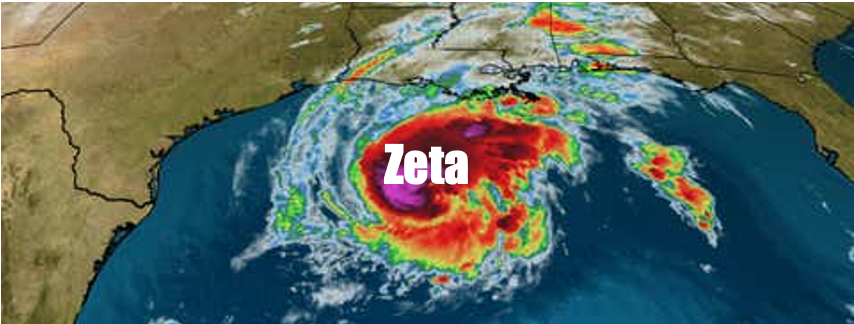Blog Layout
Hurricane Impact
Jeff Esper
Preparing for Dorian Starts Now

As Dorian approaches, businesses are preparing for impact and should also be getting prepared for post impact recovery. Once disaster strikes, the first priorities are always safety and preservation of property, but there are priorities to consider ahead of a loss to avoid unexpected surprises. Disaster mitigation and restoration is a critical service after property damage, and how you manage it may impact the outcome of your claim.
Though there are many capable firms that specialize in property damage clean-up and restoration, there are some that will make mistakes and others may even take advantage of the situation. When it comes to recovering the cost of mitigation and restoration services for an insurance claim, any mishaps can create big problems that may leave you stuck with the bill.
Here are some techniques to prevent potential problems before they arise:
- Vet your emergency response team prior to loss - Preparation is the key in any endeavor but with property damage claims, you cannot be too prepared. Recovery service providers should be identified and interviewed. Make sure the company you choose will be able to handle your potential issues. Involve your insurer during vetting. There are “approved” vendors that insurance companies recommend; however, just because they are “approved” does not mean there will not problems. Notify the insurance company of who you plan to use as well.
- Clarify and document scope of work - Be clear on scope of work with the recovery firm and make the adjuster part of that conversation. Often, emergency response does not follow the normal protocols of a typical project. There likely won’t be time for detailed estimates, so try to get the adjuster to approve work in real-time to avoid second guessing.
- Take a hands-on approach - Your property may still be underwater, but once access is granted, you must be hands-on. No one should have access to your facility without the presence of a company representative. Assign a property supervisor to the affected site to keep track of who is there and what they are doing. It’s your property and your responsibility. The bigger the loss, the more people coming in and going out, so it is vital to have a company representative onsite to observe and answer questions.
- Audit contractor invoices before approving - The first weeks after a loss is chaotic. It’s important for policyholders to put controls in place to monitor activity and to verify work has been completed to specifications and according to the terms of the agreement. Reimbursable insurance expenses should be separated and audited prior to payment for proper detail and accuracy. This needs to be done efficiently in real-time. If you don’t have the resources, this step can be completed by your claim preparation accountants i.e. forensic accountants. Having forensic accountants on your team, along with your technical experts, can process this information in the context of insurance recovery. Don’t assume your forensic accountants will automatically audit invoices. Identifying errors or worse, fraud, is critical to avoid delays in payment or project completion. If you hire RWH Myers, we will discuss the proper protocol and work with you to establish the internal controls to intercept errors.
- Address issues immediately - When the first invoice arrives, insurance companies may act surprised and even deny coverage, especially if the steps above have not been followed. Make sure to get the parties together to discuss the issues. Don’t procrastinate and don’t assume. It is important to be proactive with any potential discrepancies. The policyholder is responsible if there are unresolved differences. If the adjuster disagrees with the work performed and the invoices are paid, it may be difficult to recover everything your expenses.
The immediate aftermath of a disaster is stressful and hectic. Preparation and communication can help you weather the storm and minimize unwanted surprises when you’re looking for claim payment. Having an experienced and independent forensic accounting team will reduce the stress, the workload and reimbursement issues. RWH Myers has been preparing claims for policyholders for decades and we can help your business with insurance recovery post Dorian and any other storm this hurricane season.
For more information or free consultation, contact Jeff Esper, National Director of Business Development at jeffesper@rwhmyers.com or call 1-855-rwh-Myer(s).
Insights Worth Sharing

By Jeff Esper
•
July 21, 2021
Making a business interruption claim is more than just an accounting exercise. It requires a good strategy, a thoughtful process and perhaps most of all, patience. These lessons come from experience and the team at RWH Myers has earned it from decades of preparing BI claims. Though this topic is of the philosophical nature, it is just as important as the details behind a business interruption calculation. So let’s dive in and see what you really need to make a BI claim. Strategy Every loss is different. You can’t apply the same game plan and the same approach to every claim. You have to assess the situation and all its parts to devise a specific workable strategy. Experience will help ensure your strategy is appropriate for the situation, but the claim will take on a life of its own. The initial loss assessment is derived from the loss information such as what happened, the timeline of events, the impact to operations and how long it will take to get back to normal. As forensic accountants, we will look at the entirety of the situation and dissect it from every angle to figure out the full scope of loss and then determine the best approach to measuring and supporting the claim. We will also anticipate how the claim will be adjusted and plan for arguments against the claim. Taking the time to develop a proper strategy will pay off at every stage of the claim process. Process Once you understand the situation and have designed an effective strategy, you can lay out a process to get to the desired result. The process starts off with identifying and assembling the team to execute the plan. The claim will require data from various sources and input from key internal experts to provide insights as to the impact on operations, both upstream and downstream. The process also includes managing claim adjustment, from setting the timeline to handling requests for information. During the process, your claim preparer will work to keep all phases of the claim moving forward whether with data gathering or insurer feedback. Claims tend to start out with a high level of attention, but it is common to lose momentum. Simply put, a well-defined process will keep the claim moving, limiting distractions and roadblocks. Patience Patience doesn’t equate to conceding to a lengthy and arduous process. It’s just the opposite. By definition, it means, “quietly and steadily persevering or being diligent, especially in detail or exactness.” It is important to understand that certain parts of the claim take time to develop, and that time is critical to ensuring a thorough and well thought out claim presentation. For example, taking your time in the beginning of the process to lay out the foundational elements of the claim will avoid obstacles that may delay claim settlement and the amount recovered. It’s best to set expectations early and commit to the process. Again, practicing patience will expedite the claim process and improve the outcome. You can rely on the experience of your forensic accounting team to lead that effort. So, you see, it’s not all about the numbers. There is more to the intangibles than you may have thought. Every claim has its own unique challenges. You should be prepared for anything and everything. Again, preparing a claim is just as much strategy, process, and patience as it is the technical elements of claim preparation.

By Jeff Esper
•
October 29, 2020
Property damage insurance claims are among the most infrequent for corporate policyholders, but this year Louisiana has suffered through a record number of Hurricanes. When catastrophe strikes, recovering insured losses essential to rebuild and resume operations. Effected policyholders will need expert help to evaluate, organize and document their claim to present to insurers. Forensic accountants that devote their practice to preparing claims for policyholders have every day experience just as adjusters and auditors do, so it is certainly to your advantage to hire a firm of experts to represent your interests throughout the property damage and time element claim process. Though the specific insurance claims and the policyholders may change, the vital steps to recovery remain the same. One thing both sides agree on is that the claim process goes smoother when the policyholder is well prepared for demands of a claim from start to finish. The partners at RWH Myers prepared a detailed guide to assist policyholders in preparation for claim recovery. It is designed to serve as a resource and a framework for the claim process and includes the following sections: Establish Appropriate Accounting Methodology: Provides guidance and an organizational framework for post-loss activities, establishing specific accounts to capture the loss. Property Damage Expense Categories: Explains the types of expenses that may be included in each category of coverage and the documentation required for these costs. Claim Preparation Objectives and Overview: Identifies objectives for the claim preparation process, and provides a conceptual framework for achieving them. What is Covered: Examines the direct and indirect exposures to loss that are typically encountered, and provides guidelines for determining whether specific types of property damage losses are covered under the policy. Claim Preparation Procedures: Suggests timetables for the submission of inventory, property damage, and discusses the format and content of standard claim submissions. Audit and Settlement Guidelines: Discusses the procedures undertaken by the insurers adjusters and experts, and provides an overview of the settlement process. Click here to download the full guide.
© Copyright 2023 | All Rights Reserved | Sigma7 RWH Myers


